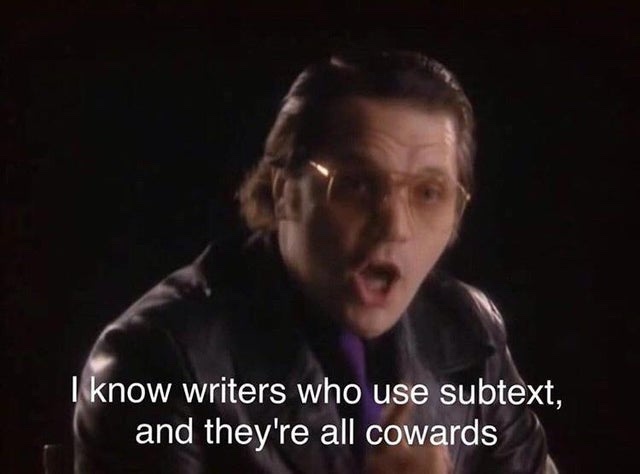As subtext is to Garth Marenghi, so are plot and characterization to Renato Polselli. I’m not sure if this is entirely a bad thing. I can’t say that it’s a good thing. But it’s definitely a thing.

The Vampire of the Opera (1964) is the most story-driven of the two films under consideration here. By that I mean that it almost has a plot. The title is a lie, in that there is no opera, but there are plenty of dancers, and they rehearse in a theatre haunted by a vampire. One of them, naturally, is the reincarnation of his lost love.

As performers-trapped-with-a-killer movies go, this is not a patch on the masterpiece of the subgenre, Michele Soavi’s StageFright (1987). It has some fun camerawork, and I did rather admire a horror film’s desire to stage a dance number in its entirety… until, that is, this meant that, apart from the opening scene, there would be no horror or vampire shenanigans until the last half-hour. At that point, total incoherence takes over, with lots of running around, mad dancing, screaming, dry ice, and laughable fanging. Plus, our vampire seems inordinately fond of his pitchfork. Go figure.

Rites, Black Magic and Secret Orgies (1973), meanwhile, may well have the most honest title in cinema history, as that is not only exactly what you get in the movie, it is also pretty much all you get. Story and characters are for the weak and the cowardly! This movie is JUST THE GOOD STUFF, ALL THE TIME.

The film looks great, but is completly plotless and utterly incoherent. There isn’t even really a premise. It makes Jess Franco’s most abstract efforts look like The Prestige by comparison. A bunch of people (but not characters) are in a castle, and they get attacked by montages. There’s babble about vampire witches, Dracula, reincarnation, and a ritual at the “25th moon”, but none of it really means anything. The film plays out like a 90-minute trailer (though with less narrative), and after a non-stop cavalcade of screaming, nudity, unconvincing torture, screaming, ritual sacrifice, screaming, psychedelic lighting, and screaming, the whole thing concludes with a wakka-wakka bit of slapstick that cries out for a Police Squad-style freeze-frame gag and a sad trombone.
We also have the presence of Mickey Hargitay. Instead of the showy role he has in The Bloody Pit of Horror (where he goes from Hugh Hefner-style dressing gown to oiled chest and red leotards, screaming about “My beautiful body!”), here he mostly stands around in a suit, doing the middle-aged glower. He’s also Dracula, apparently. Or something like that
Like its predecessor’s, Rites’ delirium is too silly to achieve the intensity of nightmare, but it does mark an advance on The Vampire of the Opera in that it commits to its sexploitative psychedelia all the way through. I can’t call it good, but I certainly can’t call it dull.
